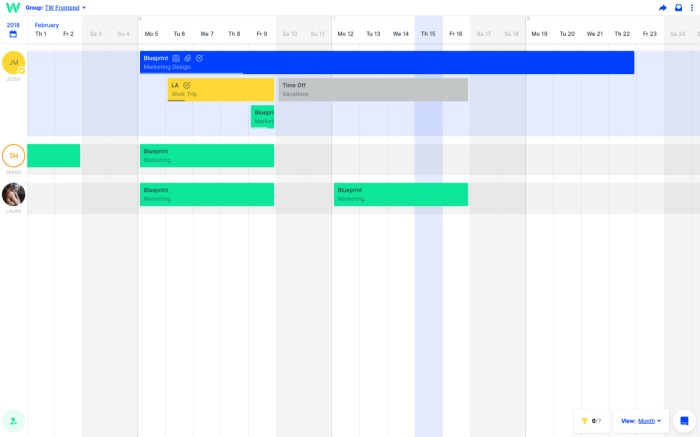Virtual Calendar Planner Your Ultimate Scheduling Solution
Stop juggling paper calendars and overflowing to-do lists. Virtual calendar planners are revolutionizing how we schedule, manage tasks, and collaborate. They’re more than just digital replacements for old-school methods; they’re powerful tools for boosting productivity and streamlining your workflow. Imagine seamlessly scheduling appointments, managing projects, and collaborating with colleagues—all in one central hub. This guide dives deep into the world of virtual calendar planners, exploring their features, functionalities, and future potential.
From basic scheduling to advanced task management and seamless integration with other productivity tools, virtual calendar planners offer a flexible and adaptable solution. They cater to diverse needs, from solo entrepreneurs to large teams, and the constantly evolving technology behind them ensures that you’re always ahead of the curve. We’ll explore the key features, examine the user experience, and even peek into the future of this essential digital tool.
Defining Virtual Calendar Planners
Virtual calendar planners have revolutionized personal and professional scheduling, offering a powerful alternative to traditional paper calendars. They are digital tools designed for managing appointments, events, tasks, and schedules across various platforms and devices. This comprehensive guide explores the evolution, functionalities, and key features of virtual calendar planners, comparing them to traditional methods and examining their impact on productivity and efficiency.
Core Functionalities and Types

Virtual calendar planners encompass a wide range of functionalities, primarily centered around scheduling, reminders, and task management. They provide a centralized hub for managing appointments, meetings, events, and personal tasks, allowing users to organize their time effectively. Different types exist, including standalone applications, integrated platforms (like those embedded within productivity suites), and web-based tools accessible through a browser. The evolution from simple paper calendars to these sophisticated digital tools reflects the increasing need for efficient and interconnected scheduling solutions.
Compared to traditional paper calendars, virtual planners offer advantages in terms of accessibility, sharing, and automation. They enable real-time updates, seamless synchronization across devices, and often incorporate reminders and notifications, significantly reducing the likelihood of missed appointments. Other scheduling tools, such as email calendars or project management software, often integrate with virtual calendar planners, creating a more unified workflow.
Key benefits of virtual planners include improved time management, reduced missed appointments, enhanced collaboration, and greater flexibility. Drawbacks might include potential reliance on technology, the need for digital literacy, and concerns about data security and privacy. Understanding these pros and cons is crucial for informed decision-making.
Features and Functionality
Essential features of a robust virtual calendar planner include the ability to schedule appointments, manage tasks, and set reminders. Advanced features extend to integrated task management, recurring events, and collaborative scheduling, enabling seamless teamwork and project management.
| Feature | Functionality | Example | Impact |
|---|---|---|---|
| Event Scheduling | Allows users to schedule appointments, meetings, and events with customizable details. | Scheduling a conference call with colleagues | Streamlines communication and coordination. |
| Reminders and Notifications | Provides timely reminders about upcoming events via various channels (e.g., email, push notifications). | Receiving a reminder for an important deadline. | Reduces missed deadlines and appointments. |
| Task Management | Allows users to create, assign, and track tasks related to events. | Creating a checklist for a presentation | Improves task completion and accountability. |
| Collaboration Features | Enables real-time scheduling and sharing with other users. | Scheduling a team meeting and inviting participants. | Enhances teamwork and communication. |
User Experience and Interface
A user-friendly interface is paramount for effective use of a virtual calendar planner. Intuitive navigation, clear visual representation of schedules, and customizable views (daily, weekly, monthly) are crucial. Accessibility features, such as adjustable font sizes and color schemes, are essential for users with diverse needs. Different navigation methods, such as drag-and-drop functionality or search capabilities, can greatly affect the user experience, making the planner more intuitive or cumbersome.
Examples of intuitive designs might include clean layouts, prominent display of important events, and straightforward navigation. Conversely, a confusing or cluttered interface can hinder user adoption. Visual organization and clear categorization are key to a positive user experience.
Integration and Compatibility
Seamless integration with other productivity tools is a critical factor in choosing a virtual calendar planner. The ability to sync with email, project management software, and communication platforms creates a unified workflow. Data synchronization across devices and platforms ensures consistent access to schedules. Data security and privacy are paramount, and users should choose platforms with robust security measures. API integration allows for seamless data transfer and facilitates deeper integration with other applications, improving overall workflow and productivity.
Case Studies and Examples
Virtual calendar planners find widespread use in personal scheduling, project management, and team collaboration. In personal contexts, they streamline daily appointments and tasks. In project management, they help in scheduling milestones, assigning tasks, and coordinating team meetings. Teams can leverage these tools for efficient communication and scheduling.
| Context | Application | Impact |
|---|---|---|
| Personal Scheduling | Managing appointments, tasks, and events, such as doctor’s appointments, travel arrangements, and social engagements | Improved time management and reduced stress. |
| Team Collaboration | Scheduling project meetings, assigning tasks, and tracking progress | Enhanced team collaboration and productivity, improved communication |
Future Trends and Developments
The future of virtual calendar planners likely involves increased integration with AI and machine learning. Personalized scheduling, adaptive planning, and AI-powered suggestions for optimal scheduling are possible developments. Furthermore, advancements in user interface design will likely enhance intuitiveness and accessibility, making these tools even more powerful and user-friendly.

